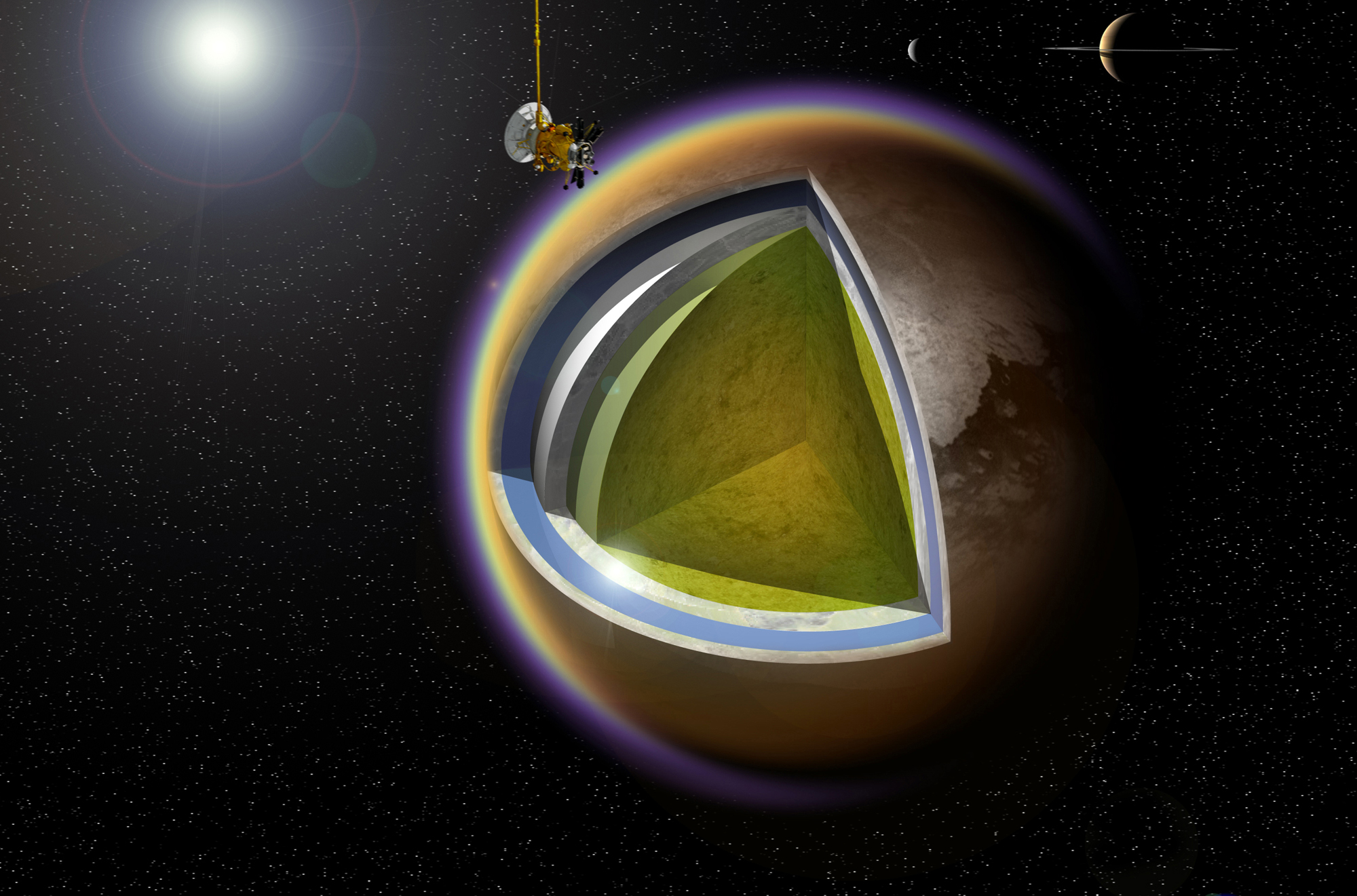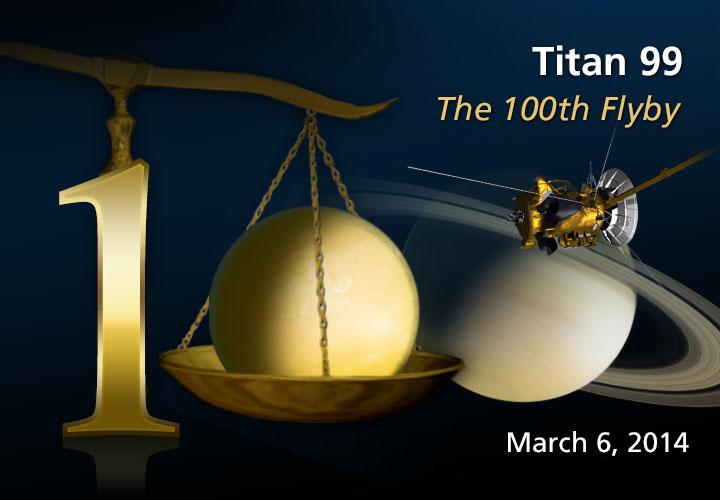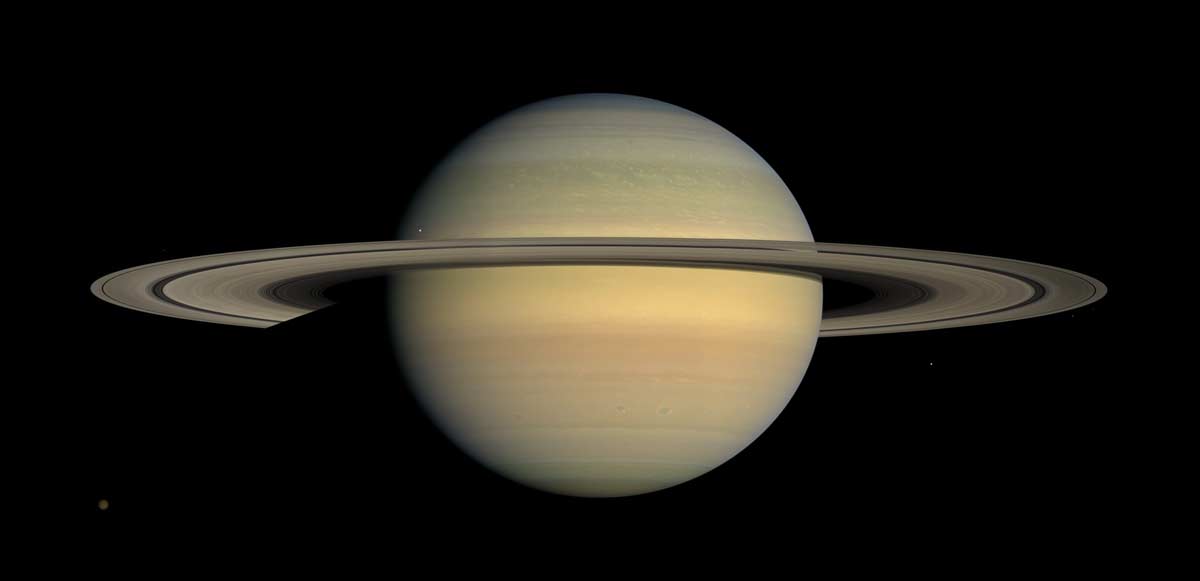NASA Spacecraft Buzzes Saturn's Largest Moon Titan for 100th Time

A far-flung NASA space probe flying around Saturn zipped past the ringed planet's biggest moon for the 100th time on Thursday (March 6).
The Cassini spacecraft made its closest approach to the hazy moon Titan at 12:45 p.m. EST on Earth (5:45 GMT), according to officials at NASA's Jet Propulsion Laboratory in Pasadena, Calif.
During the historic flyby, Cassini got within 933 miles (1,500 kilometers) of Titan's mysterious surface. [Amazing Photos: Titan, Saturn's Largest Moon]

Larger than Mercury in size, Titan has some compelling similarities to Earth. It's only other body in our solar system with an atmosphere and liquid on its surface. (It's also thought to be one of the best possible places to search for extraterrestrial life.)
JPL officials say Titan, where temperatures can drop to minus 290 degrees Fahrenheit (94 kelvins), is like early Earth in a deep freeze. It may even harbor ice volcanoes that spew water ice and hydrocarbons.
For 10 years, Cassini's images have helped scientists peer beneath the moon's orange, nitrogen-rich smog to see amazing features on the face of Titan like vast lakes made of methane and ethane that are larger than North America's Great Lakes and continually replenished by hydrocarbon rain showers.

With Cassini data, scientists have detected an ocean composed of water and ammonia below Titan's icy crust. Using radar data from the spacecraft, researchers have also determined that Ligeia Mare, the second largest sea on Titan, is about 525 feet (160 meters) deep.
Get the Space.com Newsletter
Breaking space news, the latest updates on rocket launches, skywatching events and more!
The flyby comes during a change in Titan's long seasons. Spring is finally giving way to summer in in Titan's northern hemisphere for the first time since Cassini arrived at Saturn in 2004. This means icy clouds are retreating and revealing and never-before-seen views of the lakes and seas at the moon's north pole. Near-infrared images of the region could give scientists clues about the surrounding terrain, JPL officials say.
Because Titan harbors water and organic materials, scientists think it could be a potential host of alien life forms.

Linda Spilker, Cassini project scientist at JPL, said the potential for like on Titan is twofold because of its two types of liquid bodies.
"Could a unique form of methane-based life exist in Titan's liquid lakes and seas?" Spilker asked in a statement. With a global ocean of liquid water beneath its icy crust, could life exist in Titan's subsurface ocean?"
Follow Megan Gannon on Twitter and Google+. Follow us @SPACEdotcom, Facebook or Google+. Originally published on Space.com.
Join our Space Forums to keep talking space on the latest missions, night sky and more! And if you have a news tip, correction or comment, let us know at: community@space.com.

Megan has been writing for Live Science and Space.com since 2012. Her interests range from archaeology to space exploration, and she has a bachelor's degree in English and art history from New York University. Megan spent two years as a reporter on the national desk at NewsCore. She has watched dinosaur auctions, witnessed rocket launches, licked ancient pottery sherds in Cyprus and flown in zero gravity on a Zero Gravity Corp. to follow students sparking weightless fires for science. Follow her on Twitter for her latest project.









